Buenos Dias, nature enthusiasts! Do you want to learn about Mexico’s most fascinating wild animals?
Hold tight, as we promise a fascinating journey with many interesting facts.
In Mexico, mother nature has built an intricate web of ecosystems to shelter some of the most stunning mexican animals such as whales, Jaguar, Axolotl, East Mexican Black Bears, Harpy Eagle, Vaquita, Ocelot and Mexican Wolf.
Let’s unravel the peculiar and wonderful wildlife of Mexico — the land with some of the richest culture, the most delectable cuisine, and the most beautiful landscapes.
Also Read: Aligators in Mexico
Popular Animals in Mexico
- Whales
- Jaguar
- Axolotl
- East Mexican Black Bears
- Harpy Eagle
- Volcano Rabbit
- Vaquita
- Mexican Wolf
- Spider Monkey
- Ocelot
- Spiny-tailed Iguana
- Southern Flying Squirrel
- Scarlet Macaw
- Mexican Rattlesnake
- Anteater
- Opossum
- Sea Turtle
- Cenzontle
- Red Knee Tarantula
- Quetzal
- Booby
- Armadillo
- Burrowing Toad
- Manatee
- Morelet’s Crocodile
The sun-kissed coastlines, jungles, mountain peaks, arid deserts, mesmerizing cenotes, and cloud forests of Mexico are teeming with wildlife.
1. Whale: Mexico’s Gentle Giant
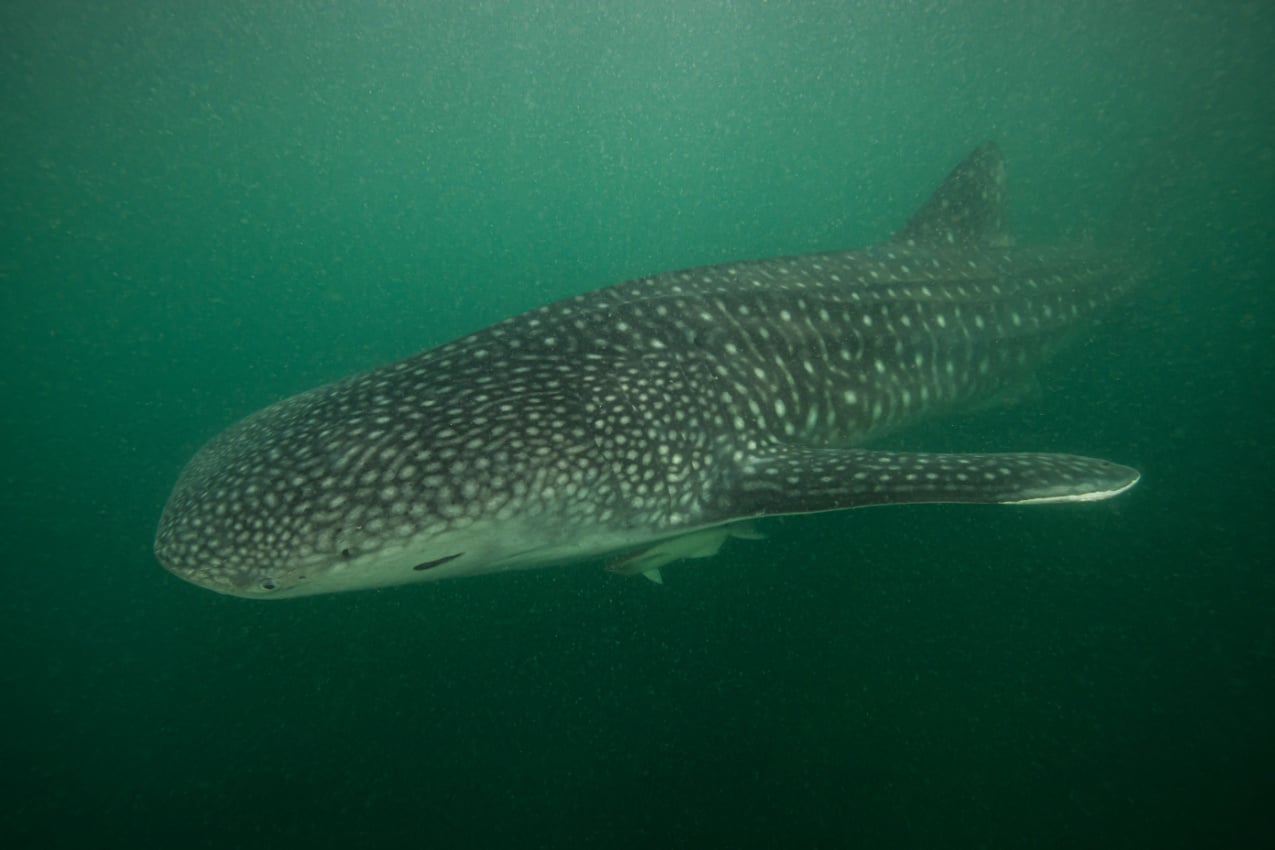
Whales have migrated to Mexico’s warm seas for millennia. As the northern oceans become colder, these gentle giants migrate south to Mexico’s sunny coast to raise their young.
The most common whale species that migrate to Mexico’s Pacific coast are the humpback, grey, and blue whales. And the best part? You can take a boat ride and see them as they approach the surface at many locations in the country!
Whale season runs from December to May, and if you happen to be somewhere along the Pacific Coast, such as Cabo or Puerto Vallarta, you can schedule a boat tour and see these gentle giants up close.
2. Jaguar: The Feline Majesty of the Jungle
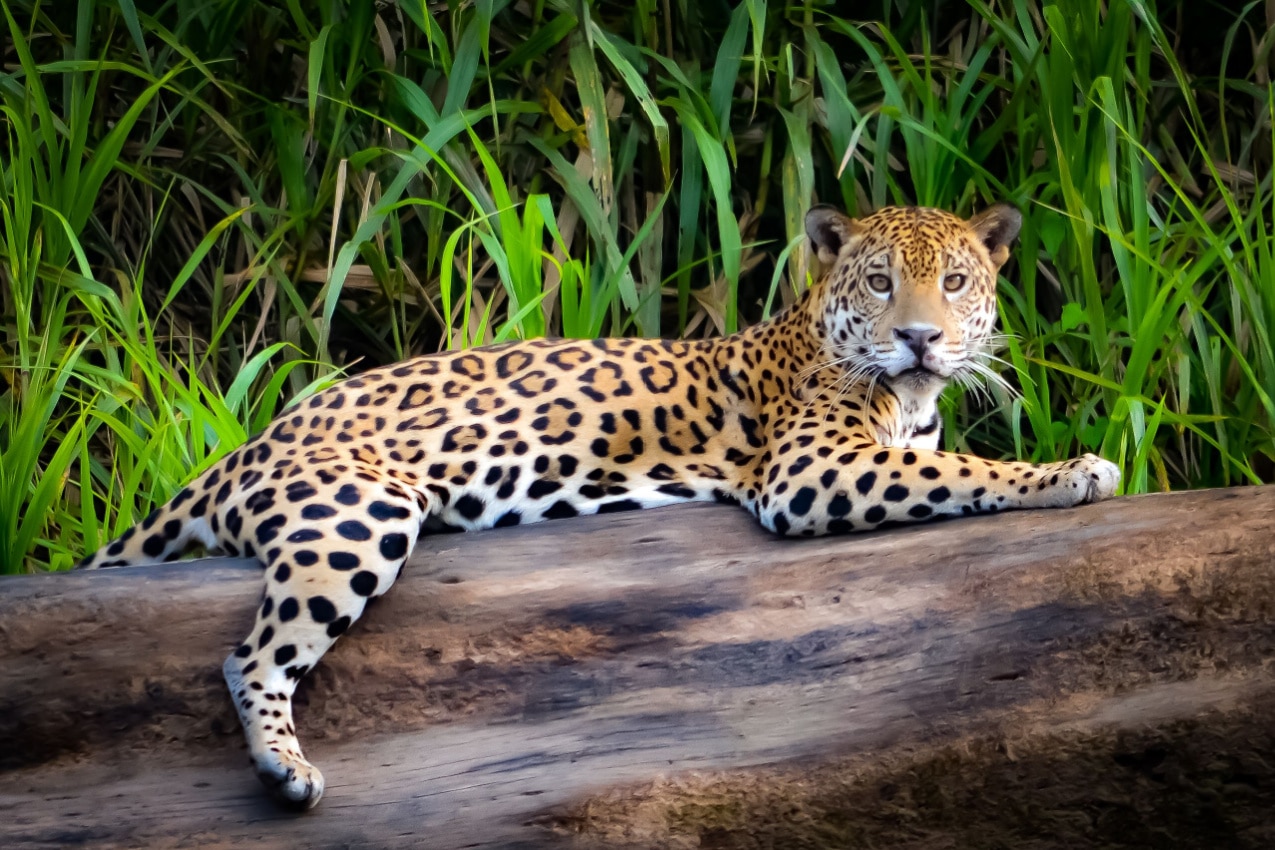
Mexico has Mesoamerica’s greatest jaguar population. These beautiful beasts have played key roles in Mexican culture, serving as deities for the Olmecs, Mayas, and Aztec people.
Their name translates to “he who kills with a single leap,” for a good reason — jaguars have the strongest bite among large cats. Their teeth are even powerful enough to puncture the thick hides of crocodiles! Another point in their favor is the fact that the jaguar is the world’s third-biggest cat, after the tiger and lion.
You can book a scientific excursion into the jungle and search for jaguars. Tulum, for instance, is the place to be for an adventure like this. Do you have the courage to meet this beautiful spotted beast in person?
3. Axolotl: Mexico’s Aquatic Marvel
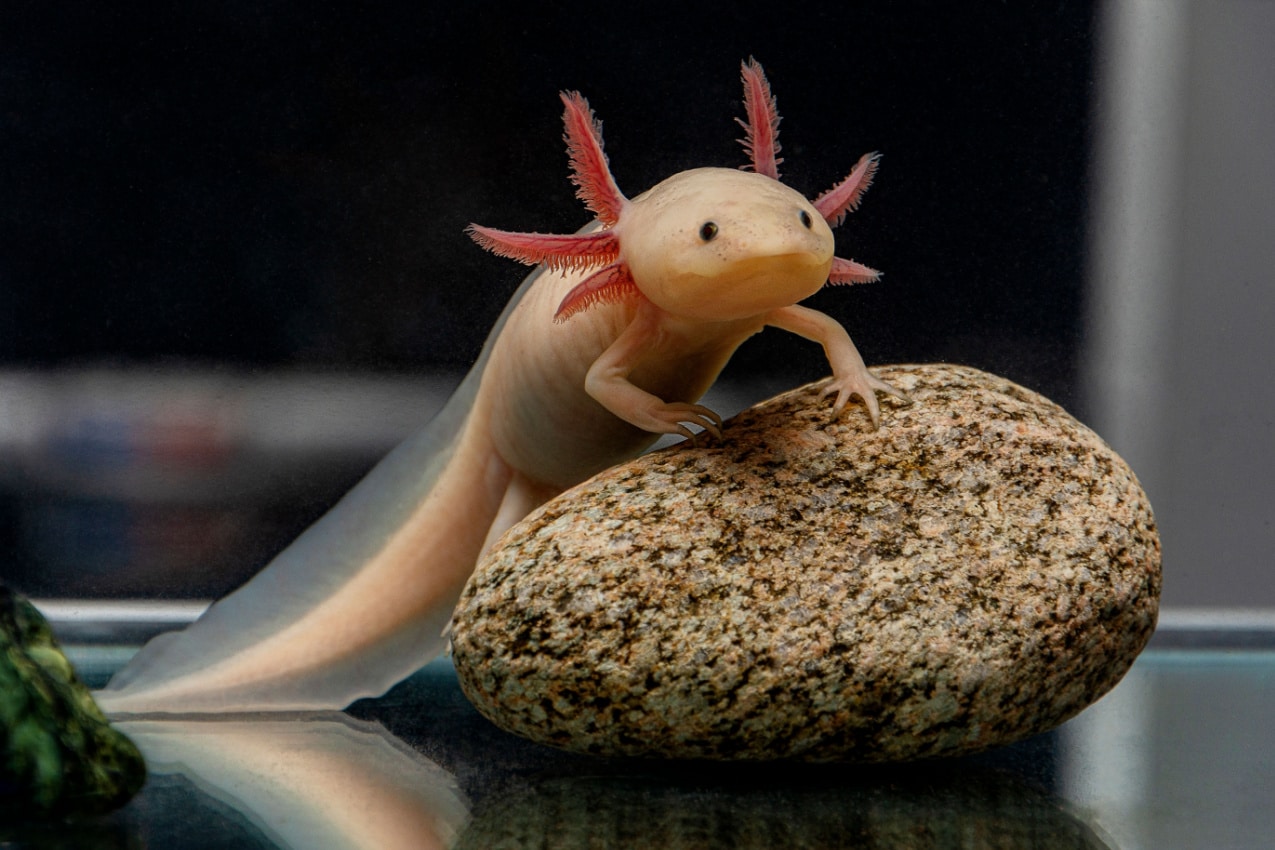
Introducing the master of metamorphosis — the Mexican axolotl. What’s fascinating about these river species is they can regrow missing organs and body parts while maintaining their youthful look.
They can only be found in one place in the world, though — at the Xochimilco Lake Complex, near Mexico City. Plus, they’re an endangered species, with only around 1,200 remaining.
So the chances of you spotting one in the wild are very slim. Many are, however, raised in captivity for research and conservation purposes. You can check them out in Mexico City’s Chapultepec Zoo.
4. East Mexican Black Bear: A Symbol of Strength and Beauty
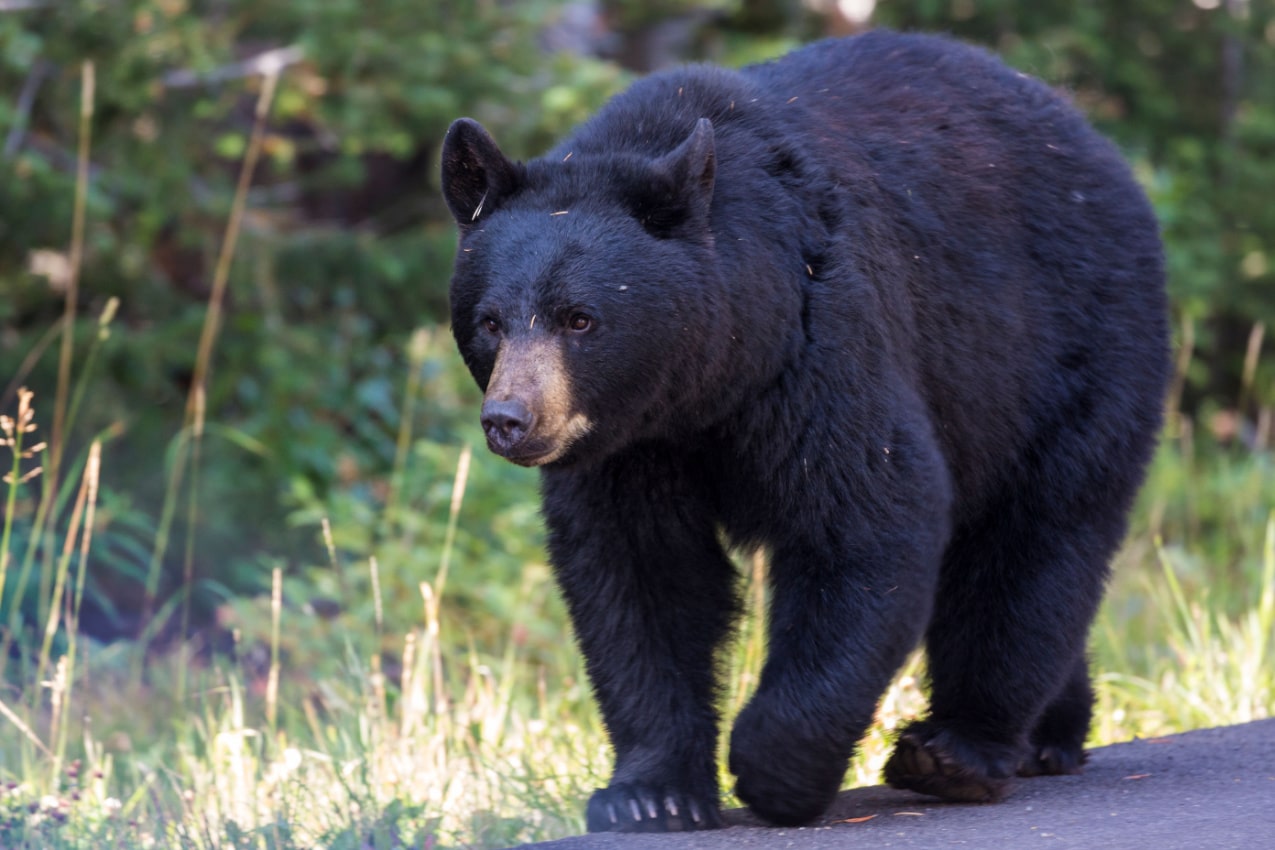
Mexican black bears dwell in forests, mountains, and swamps. They are excellent climbers, and during the summer, they can even be spotted dozing off on treetops.
Despite their name, black bears can also be blue-gray (also known as glacial), brown, cinnamon, and white, which is the rarest. A white-black bear, what a paradox, right?
When it comes to their diet, black bears aim to accumulate as much body fat for wintertime as possible, so they are constantly munching on veggies, fruits, and meat. But don’t worry — black bears prefer fish and deer to humans!
5. Harpy Eagle: Mexico’s Winged Wonder of the Sky
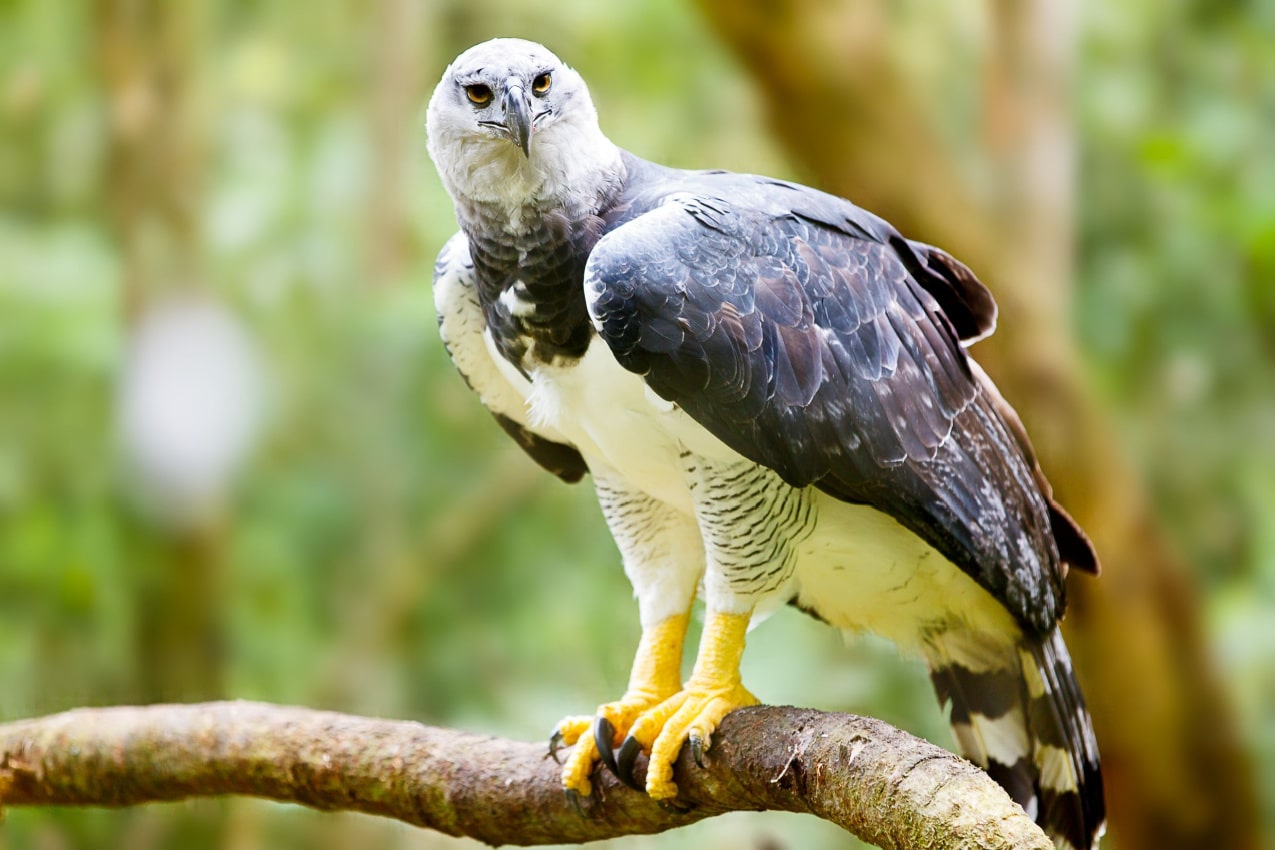
In the lush rainforests of Mexico lives a divine bird that seems to have come straight out of Greek mythology — the harpy eagle. In the past, many believed it really did since it’s named after the Harpies (women with the bodies of birds).
The harpy eagle is massive. They’re the world’s fiercest and biggest raptors. A harpy eagle has human-sized legs, claws comparable to grizzly bear paws, and a wingspan of up to 7.4 feet (2.3 meters).
Females are bigger than males, something we don’t see very often in the wild. A mature female harpy eagle can carry prey weighing up to 20 lbs (9 kg) in the air.
6. Volcano Rabbit: A Tiny Treasure of the Mountains
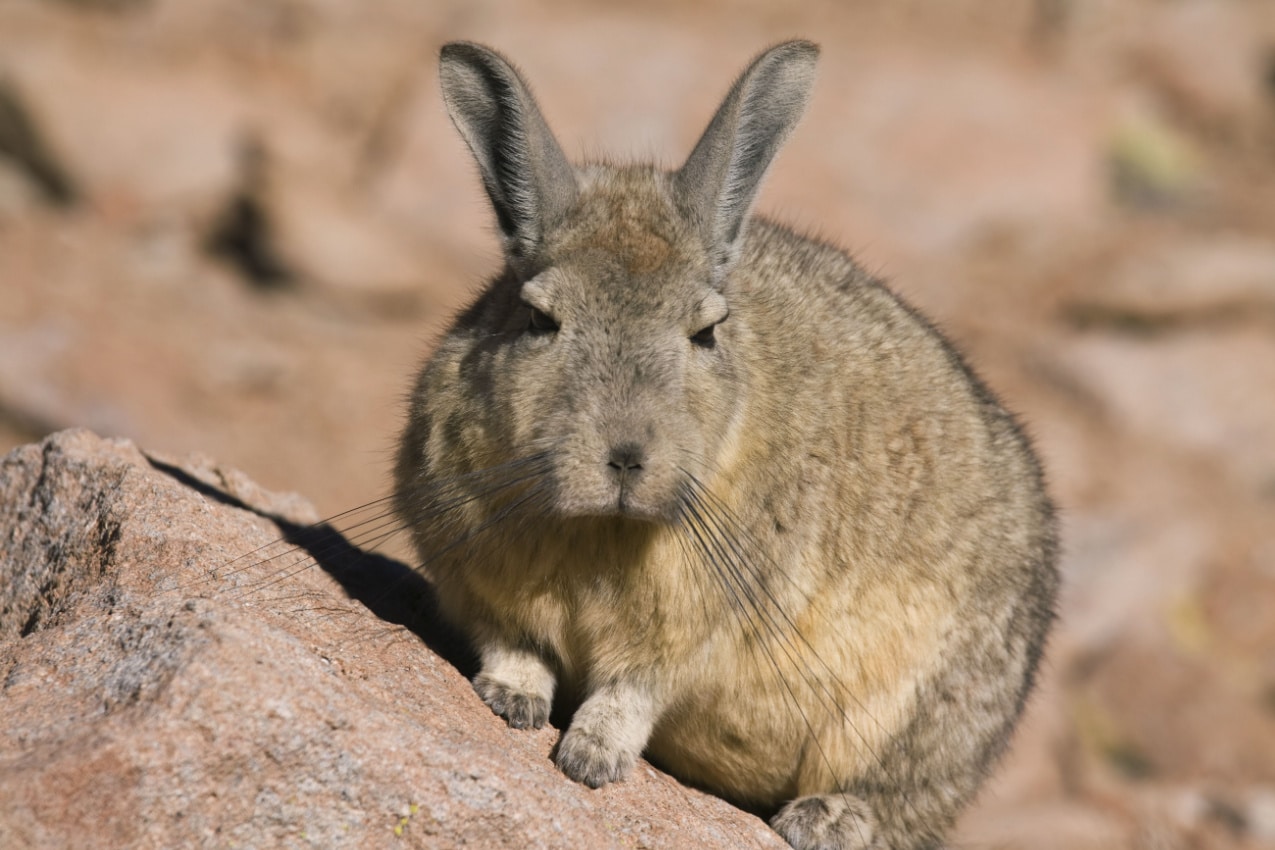
What’s up, Doc? The volcano rabbit is a tiny and adorable bunny that lives in the mountain regions of Mexico.
It gets its name from its peculiar habitat, as it can only be found on the slopes of the extinct volcanoes in central Mexico. The fur of a volcano rabbit is short and thick, and its ears are tiny. Their color is either black or brown, which offers the perfect camouflage for the stony, volcanic terrain.
The volcano rabbit is the world’s second-tiniest rabbit, behind the pygmy rabbit. How adorable!
7. Vaquita: The Rare and Endangered Marine Porpoise

The vaquita is the world’s smallest aquatic mammal, and it has to be the cutest! Their facial characteristics are what makes them so unique: black rings around their eyes and curved smiling lips. When you look at them, they resemble a smiling panda, or should we say — a smiling mermaid panda!
Vaquitas can grow 5 feet (1.5 meters) tall and weigh 120 lbs (54kg). They can be found in the shallow waters of Mexico’s upper Gulf of California and nowhere else in the world
8. Mexican Wolf: The Spirit of the Wild
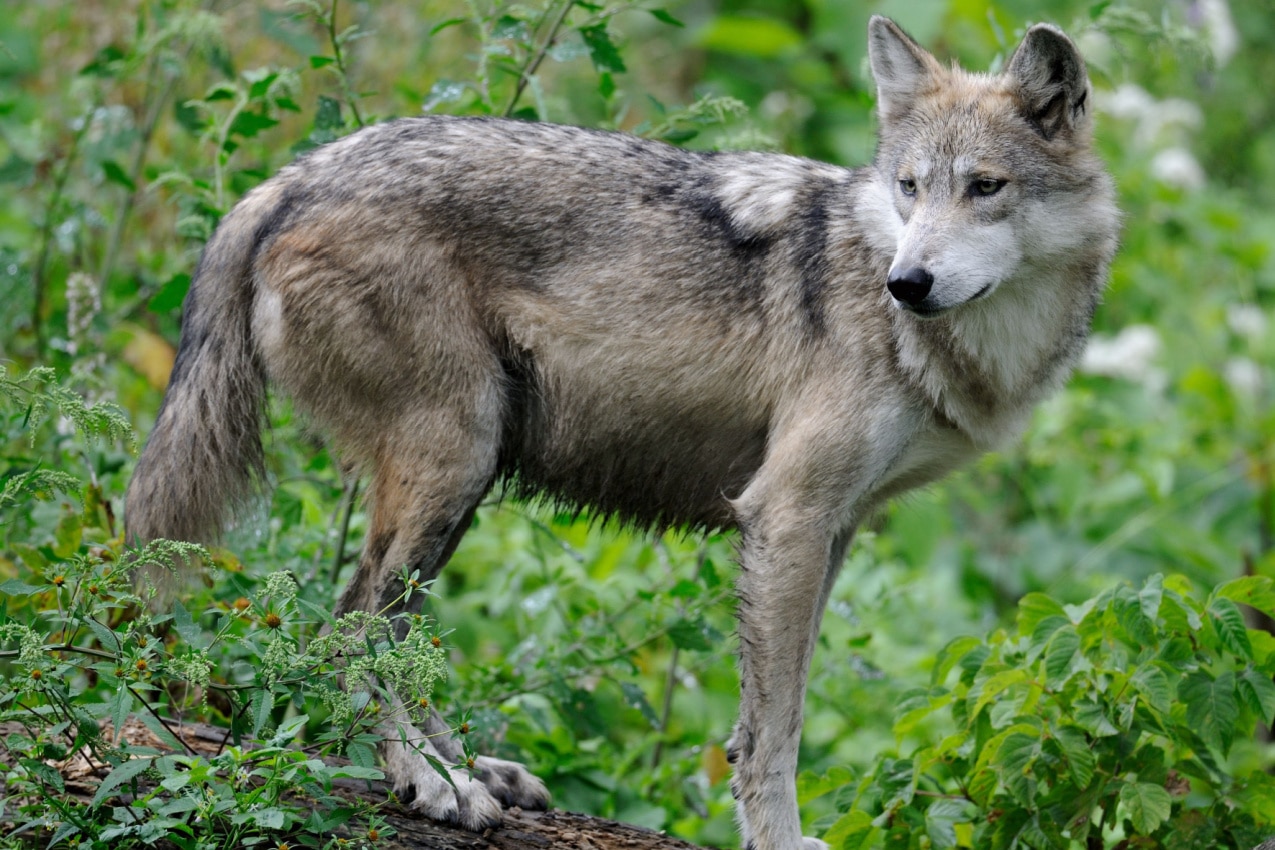
Mexico is home to the world’s most endangered wolf, the Mexican gray wolf. Mexicans call it “el lobo,” which translates to “the wolf.”
In fact, they’re the smallest Gray wolf subspecies. They’re roughly half the size of North American gray wolves, reaching a maximum height of 31.9 inches (81cm) and a length of 60 inches (152cm).
In Mexican folklore, wolves symbolize Huitzilopochtli, the Aztec god of war and the sun. Other myths mention wolves guiding dead warriors on their journey to the underworld. So, if you encounter one, express your gratitude! Just kidding, it’s best to run as fast as you can because although small, they’re very dangerous!
9. Spider Monkey: The Playful Acrobat of the Canopy
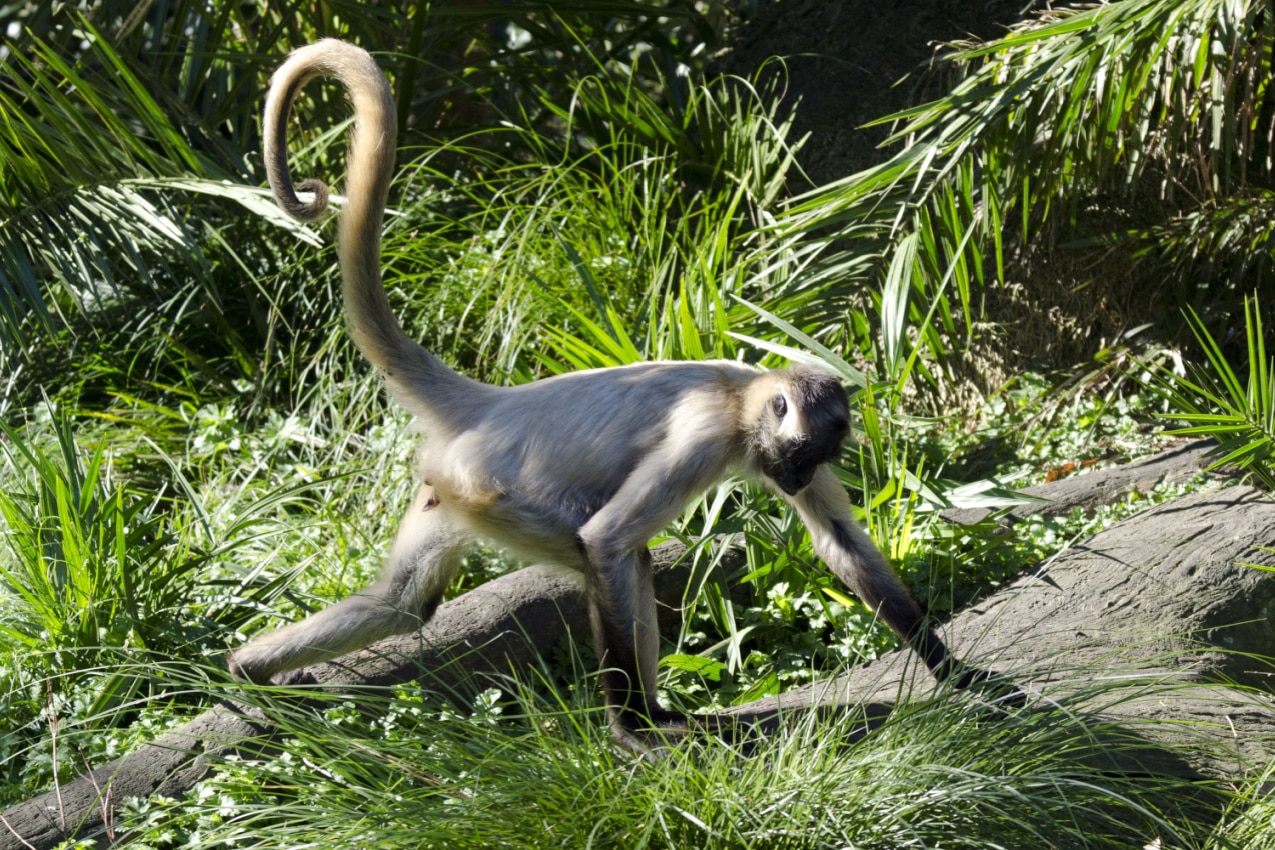
You can find spider monkeys in the tropical jungles of southern and central Mexico. They earned their moniker from the way they dangle from branches and swing across the treetops, like spiders.
These creatures have only four fingers. Their tail functions as a fifth limb, capable of supporting their entire body weight as they hang on trees and collect fruit to munch on.
If you love hiking and wish to see these beautiful creatures, hop on to a tour, like the one in Punta Laguna, where you can meet these monkeys in real life in their natural habitat. Just make sure to bring enough bananas for snacks — monkeys love them!
10. Ocelot: A Tiny Yet Fierce Jungle Cat
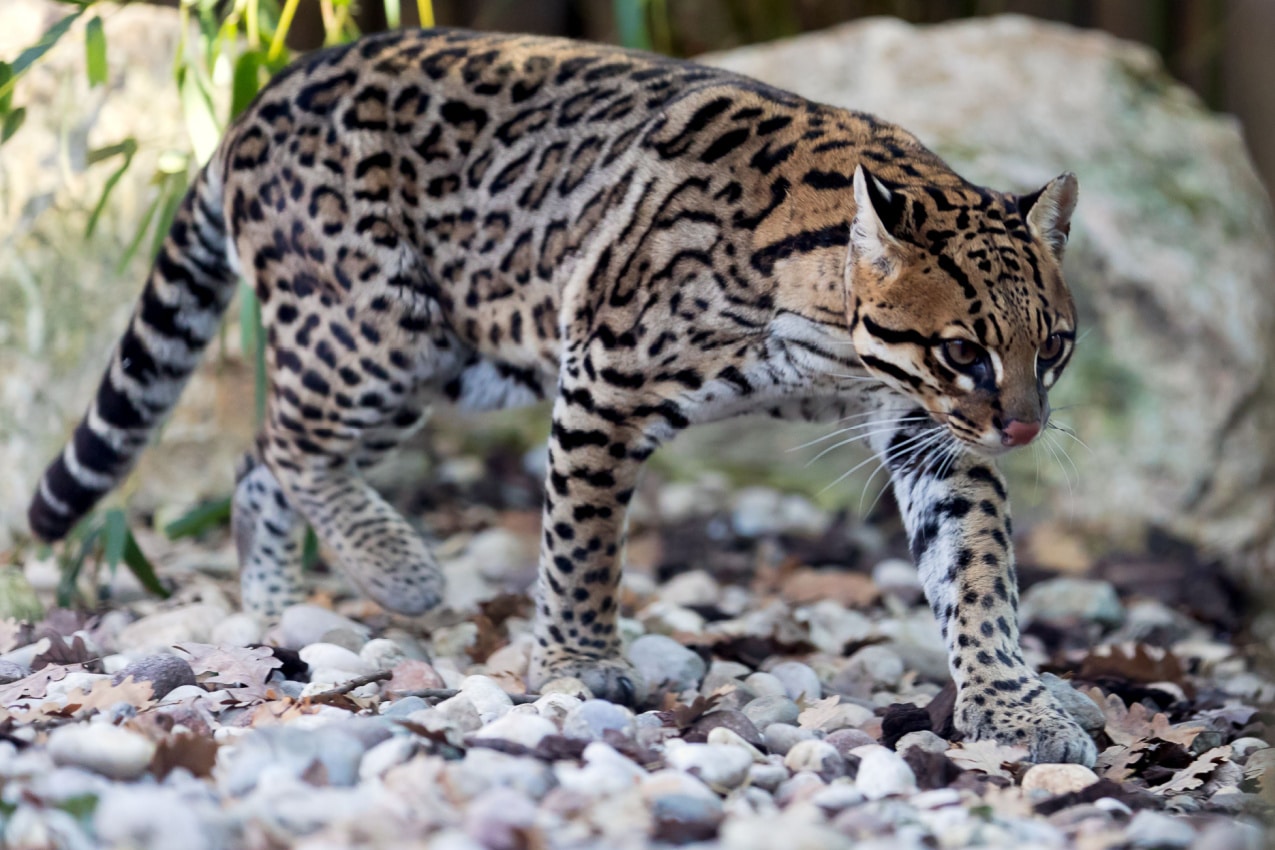
The ocelot is a wild cat that dwells in Mexico’s rainforests. Its name derives from the Aztec word “tlalocelot” meaning “field tiger.”
Some also call it “painted leopard.” However, the ocelot is much smaller than the leopard and can grow twice the size of a house cat.
Due to their nocturnal nature, ocelots spend most of their time hunting at night. They enjoy hunting for rodents as well as birds, monkeys, and fish. They’re great swimmers and don’t fear the water like many other cat species.
If you are fascinated by the beauty of ocelots, you can see them in their new safe haven in Mexico — the Puerto Vallarta Botanical Garden.
11. Spiny-Tailed Iguana: Desert Dweller With a Prickly Charm
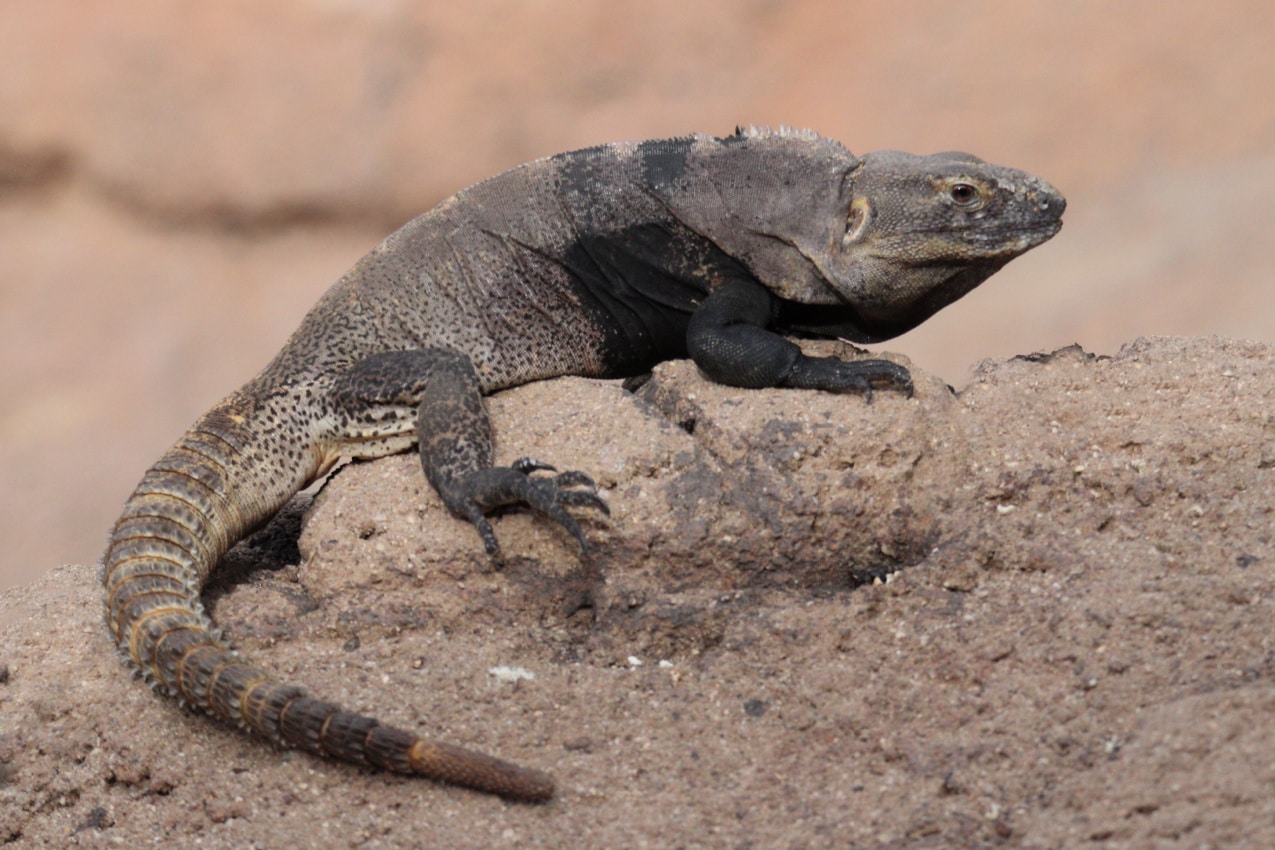
If you’ve spent time roaming the Riviera Maya, you’ve probably seen the spiny-tailed iguana, also known as the black iguana.
They’re distinguished by their large size, the rough, prickly scales on their tail, and the black stripes that adorn their gray skin.
Spiny-tailed iguanas eat mostly leaves, fruit, veggies, and flowers, but they can also chomp on crabs, small animals, birds, and eggs.
You can encounter these lizards along the coastal destinations of Riviera Maya, such as Playa Del Carmen or Cozumel. They’re adorable, but their spines pack a powerful punch, so be careful!
12. Southern Flying Squirrel: The Acrobatic Marvel of the Skies
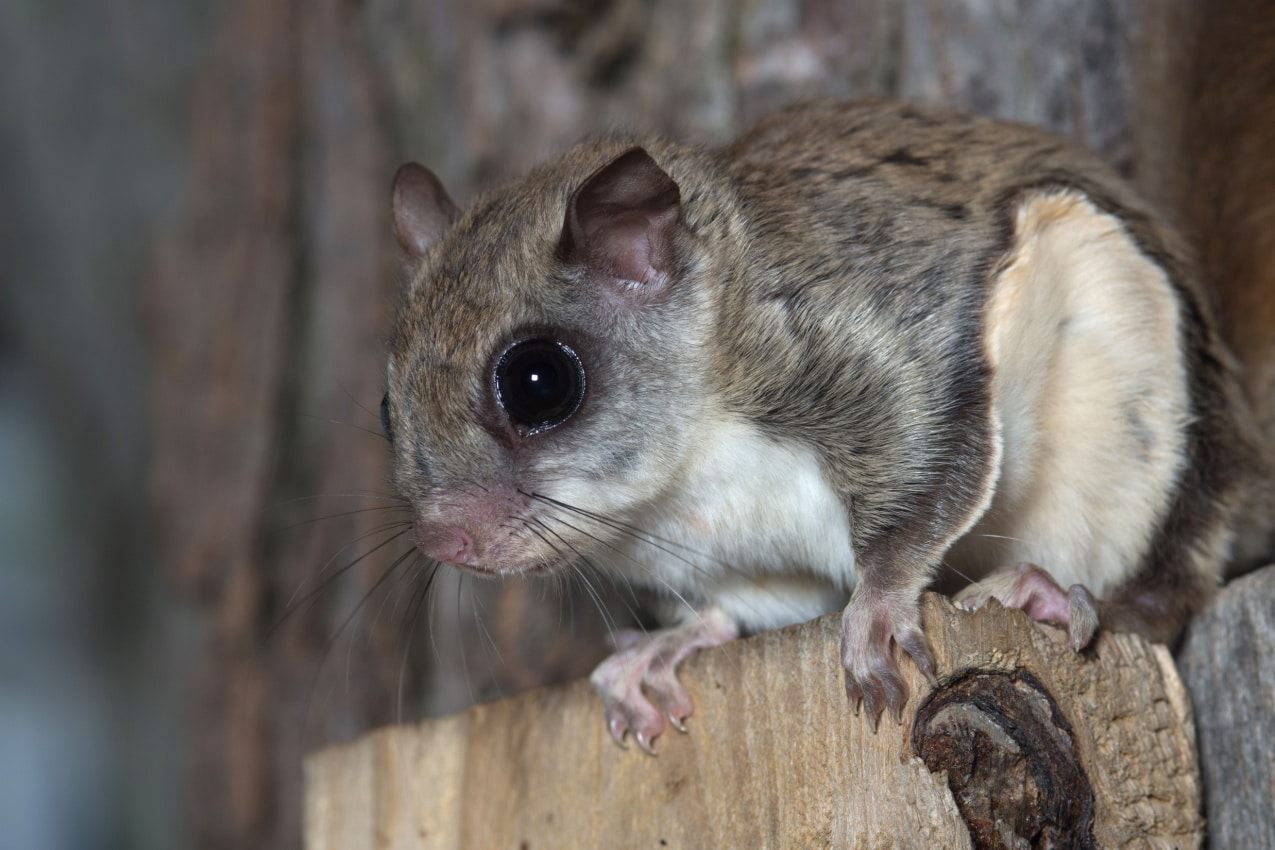
We all know bats as the flying mammals. However, there’s something far cuter that swoops on trees at night in Mexico – the flying squirrel!
Flying squirrels actually glide, not fly, and have been around since the Oligocene Epoch. They travel from tree to tree via a unique membrane that connects each front and rear limb.
One of the reasons humans find flying squirrels so adorable is their large, wide eyes. But they can totally take you by surprise when you see them gliding across the treetops at night.
Don’t worry, as they’re really just looking for a late-night snack! Their favorites are nuts, berries, and eggs. Pack some, and maybe they’ll come!
13. Scarlet Macaw: The Avian Jewel of the Tropics
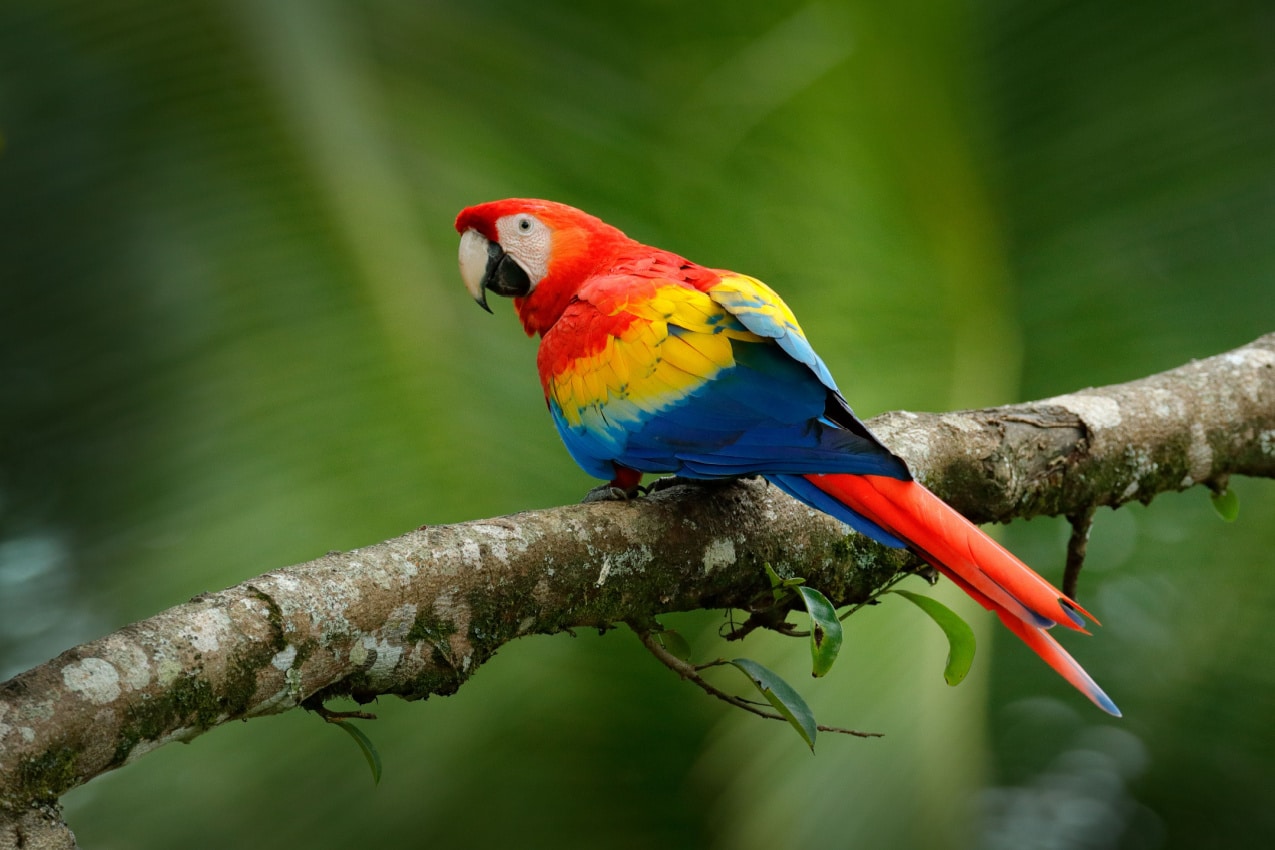
Introducing the largest parrot in the world — the scarlet macaw!
The scarlet macaw is a gorgeous bird; it has a white face and a brilliantly colored body with red, green, yellow, and blue feathers.
Not only is it beautiful, but it’s also one of the world’s most intellectual bird species, capable of learning tricks and mimicking words and noises. These birds also have a very long lifespan, with some living up to 75 years in captivity!
Scarlet macaws are monogamous. Once they find their soulmate, they are bonded for life. The only time they separate is when the mother feeds the little ones, and the father fetches food.
The cutest part is that they show affection by licking each other’s faces.
14. Mexican Rattlesnake: A Snake That Comes With a Warning
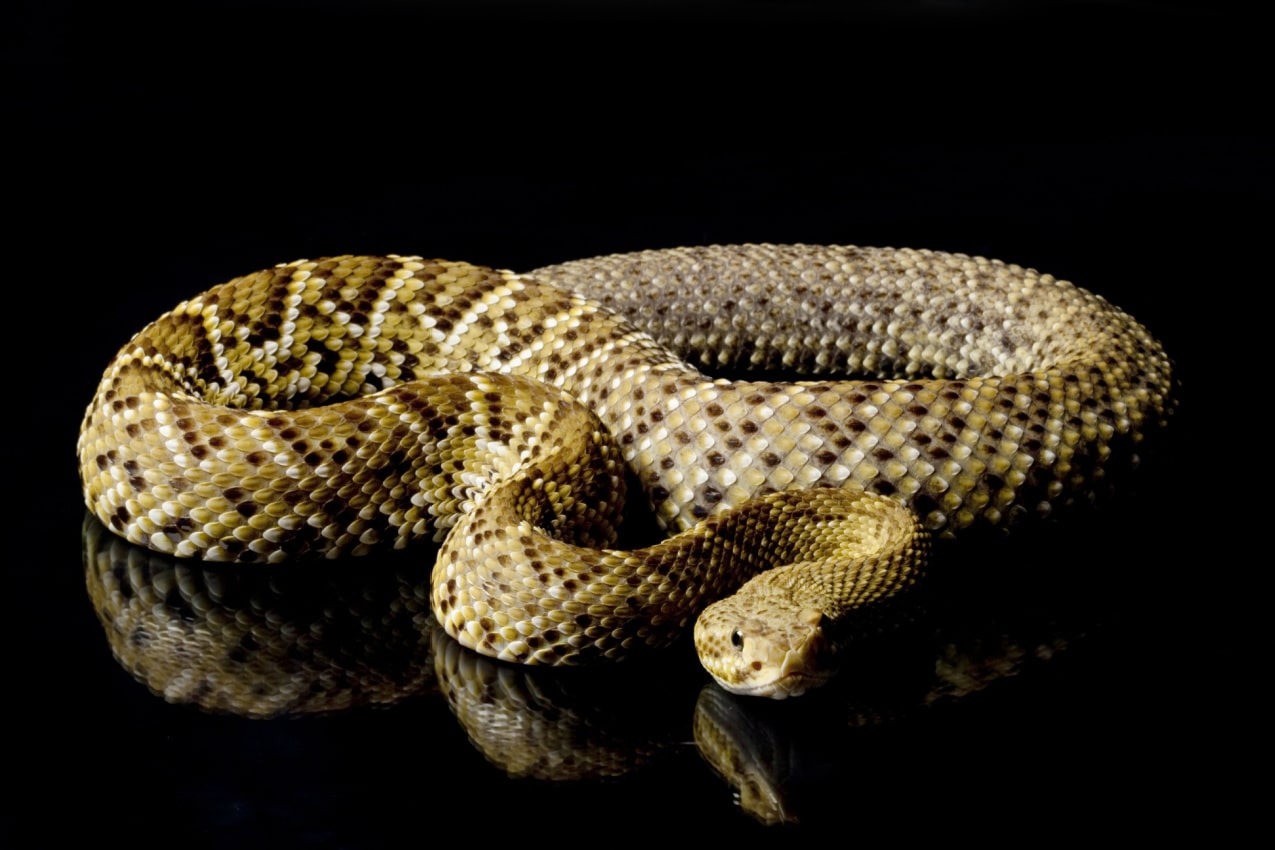
If you hear a hissing sound in the forest or grassland in Mexico, you better watch out — an angry rattlesnake may be around.
Their name comes from the rattle at the tip of their tails. Inside, there’s a network of keratin rings that vibrate and create that infamous sound. This strategy is meant to scare predators or warn onlookers.
The good news is that, although they look and sound very frightening, their meal of choice is not human! They prefer to consume frogs, small animals, reptiles, and insects.
They will, however, bite you if they feel threatened. All rattlesnake bites are venomous but rarely fatal. So if you hear a rattle, don’t let curiosity get the best of you — just move away from the sound as calmly as you can.
15. Anteater: The Expert on Insect Control
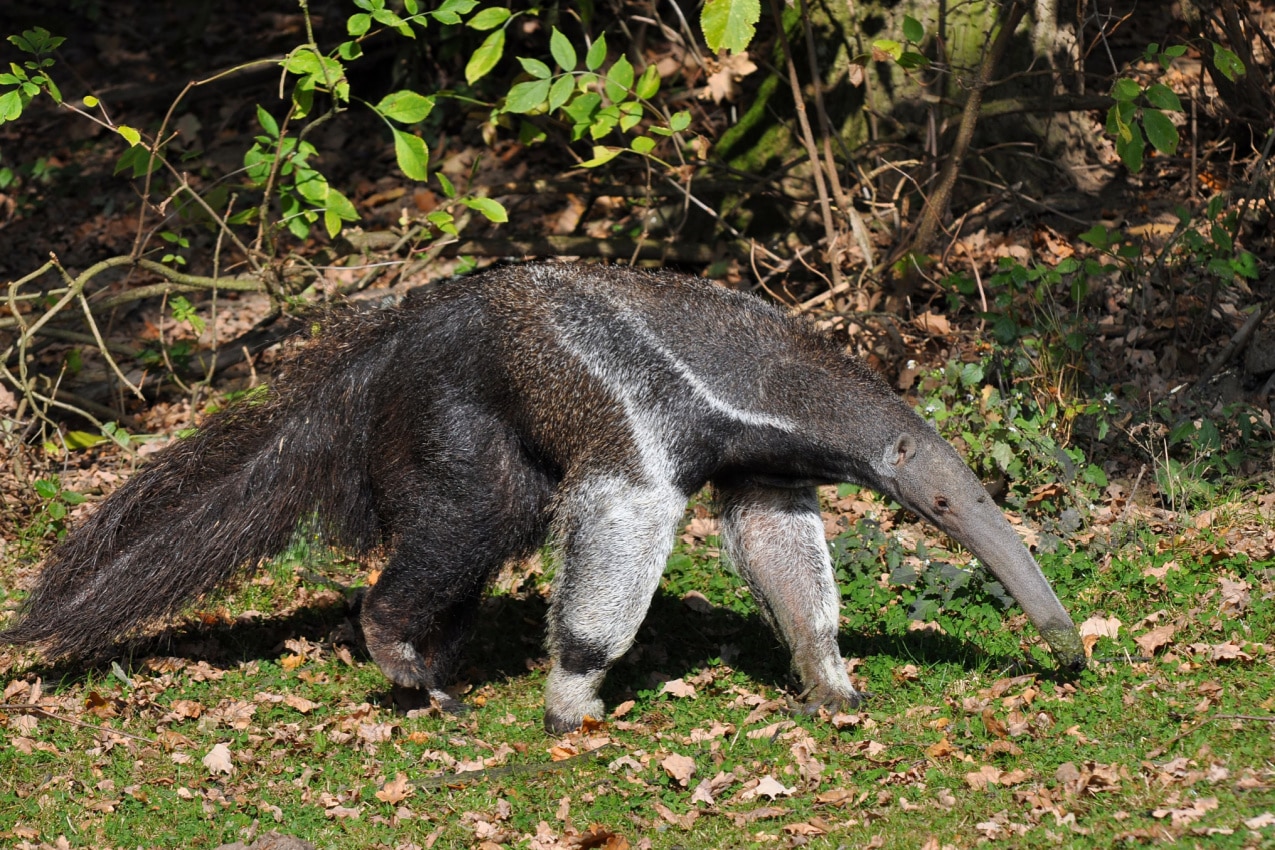
If there was a trophy for the insect with the biggest appetite, the anteater would undoubtedly take home the honor.
Known for its long nose and spiky tongue with sticky saliva, the anteater can consume up to 30,000 insects each day. Amazing!
While an anteater is peaceful by nature, when threatened, it will rise straight on its hind legs and engage in combat with its enormous claws. This strategy helps them repel even a puma or a jaguar!
Their appearance is so unique, it’s surreal. An anteater was the pet of choice of the artist Salvador Dali, and he famously took it out on a stroll in Paris!
16. Opossum: The One That Is Always Hungry
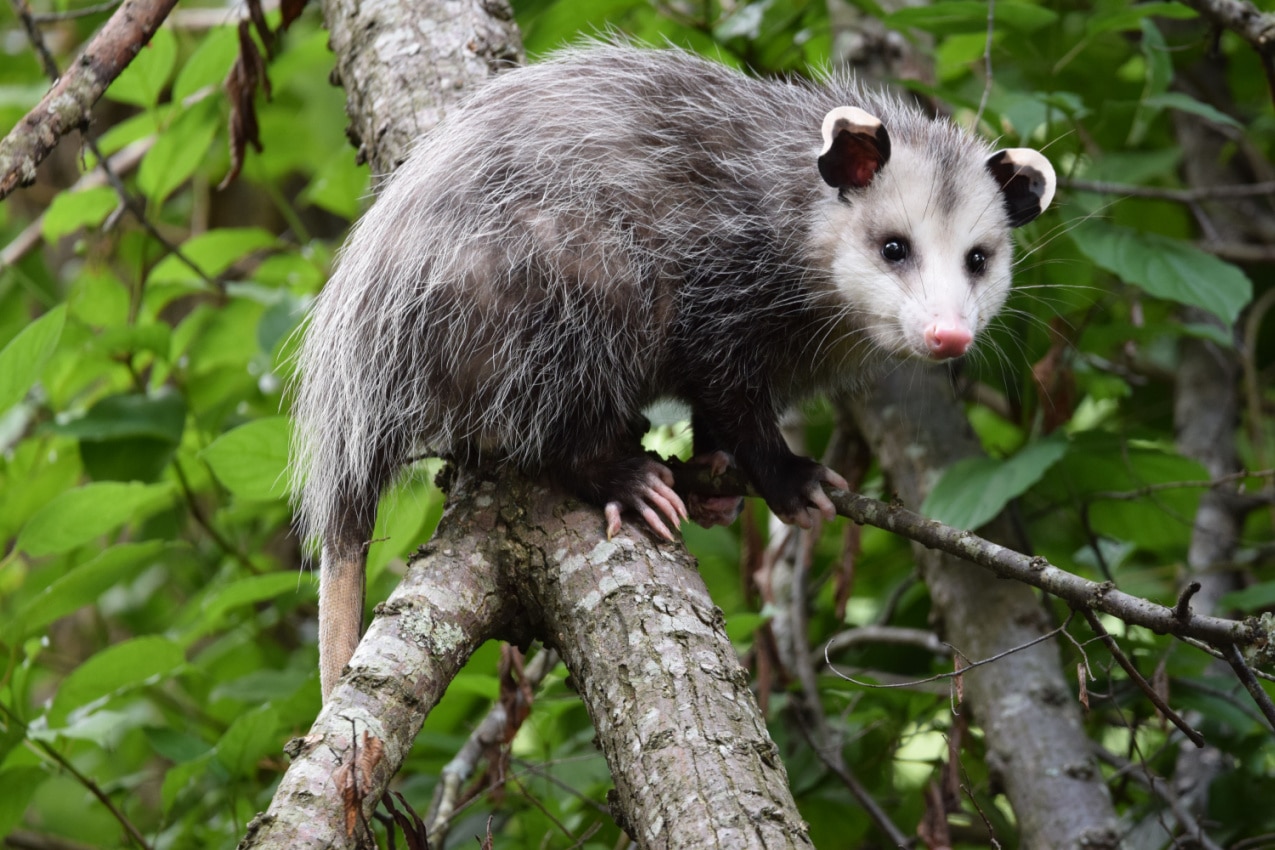
Opossums have a poor reputation for looking like rats and eating from garbage cans. Sure, they’re not the cutest, but it turns out they have nothing to do with rats!
Opossums are a type of mammal more closely linked to kangaroos and koalas than to rats. They are predominantly found in Mexico’s Yucatan Peninsula region, and there are eight species: Norteo, Sureo, Gray Macaw, Gray Mouse, and Mexican Mouse.
Opossums are known as “tlacuache” in Mexican, which means “the one that is always hungry.” They’ll devour anything they see and love scooping around in trashcans looking for leftovers! They also love to eat ticks and deadly snakes. So next time you see them, let them be. They may save you from a deadly snake!
17. Sea Turtle: Nature’s Ancient Mariners
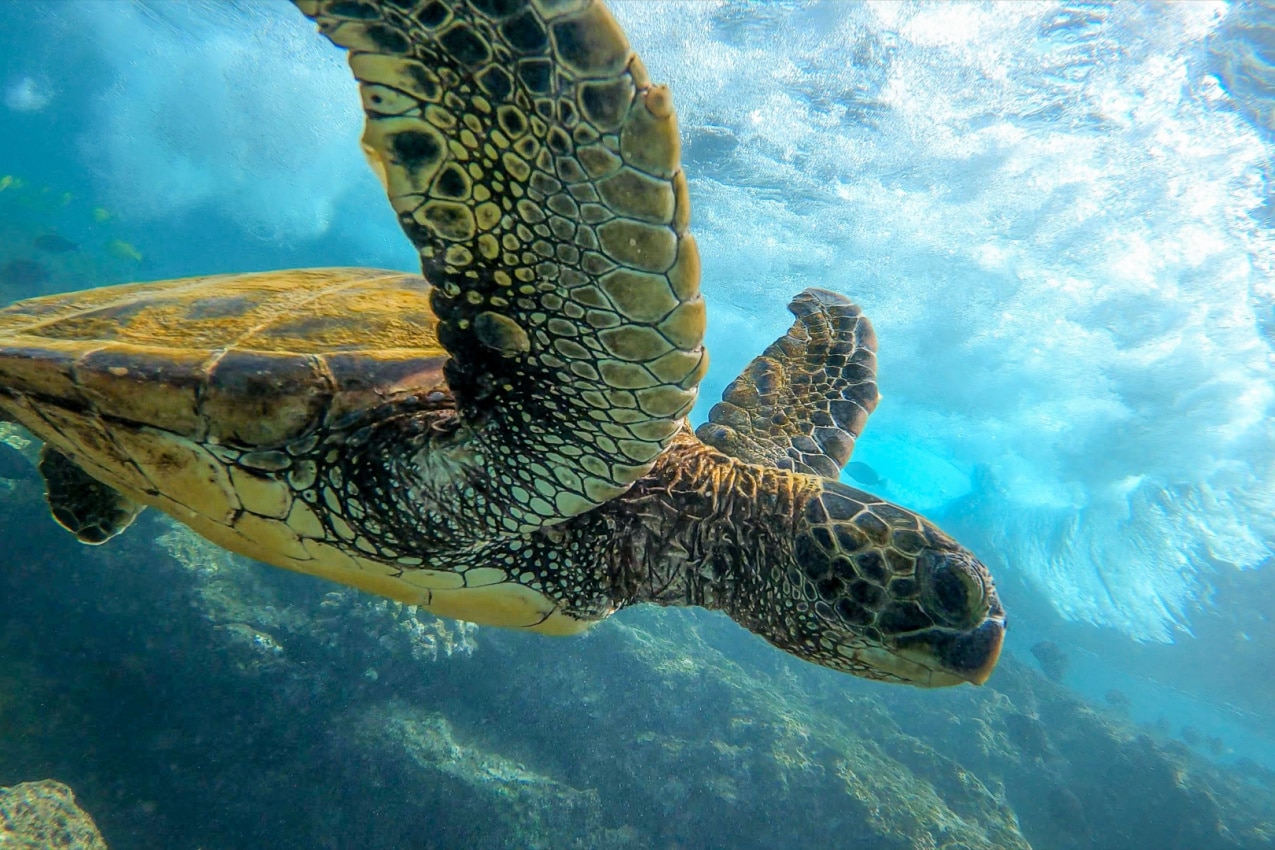
There’s a good reason why Mexico is known as “the land of the turtles“. Mexico’s coastline is home to eight distinct kinds of sea turtles.
Sea turtles have been cruising the oceans and coasts for more than 100 million years, making them one of the planet’s oldest animals. This means that when dinosaurs roamed the planet, sea turtles did too!
Turtle shells are formed of bones — fifty, to be precise. So when you think about it, they’re basically carrying their skeletons on the outside.
Sea turtles have an incredible memory. No matter how far they’ve roamed, they always know how to get to the spot where they were born. This is wonderful news for travelers to Mexico because the Cabo and Akumal coastlines are their preferred hatching locations.
18. Cenzontle: The Songbird Maestro of the Tropics
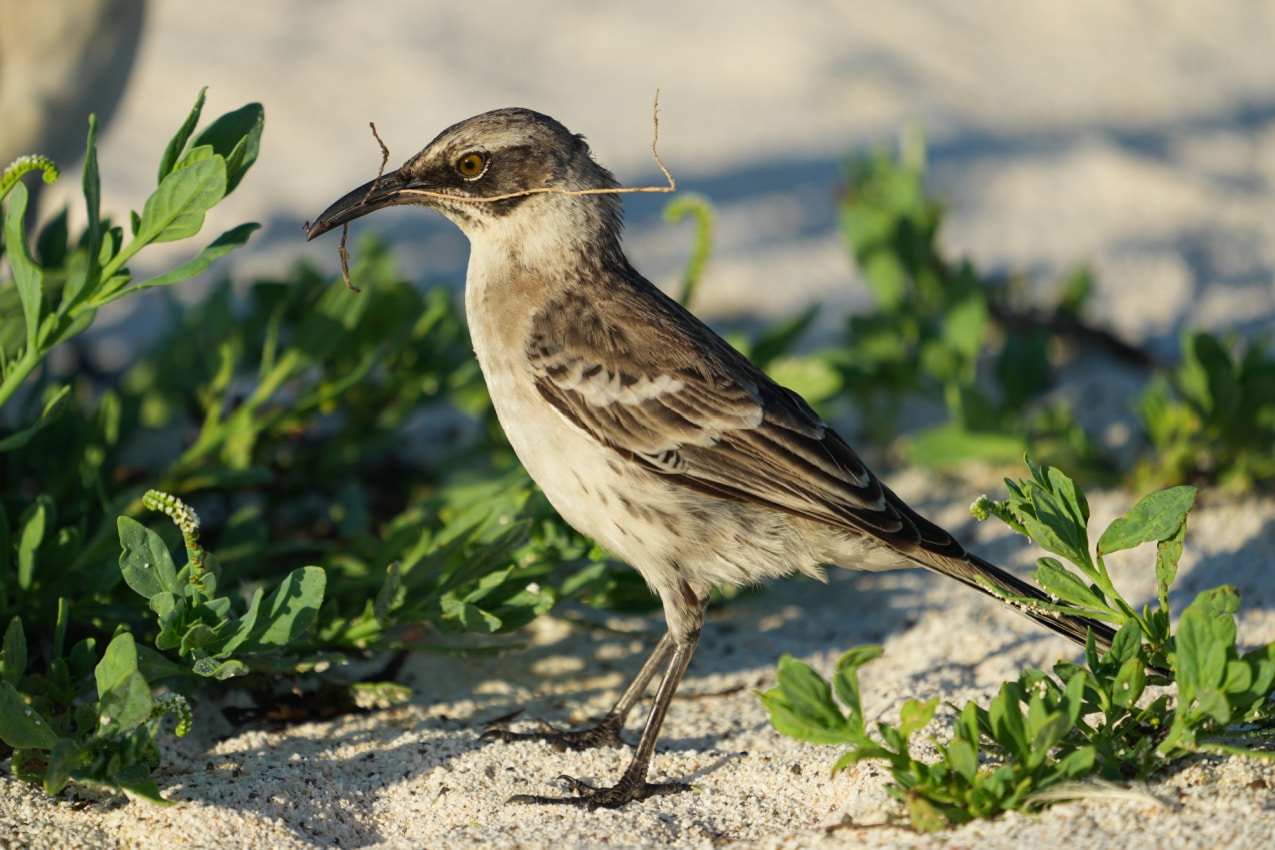
The Northern Mockingbird, also known as Cenzontle is one exceptionally gifted bird species.
Cenzontle can sing almost indefinitely, adding new sounds to their repertoires as they grow older. A male can learn roughly 200 songs throughout his lifetime!
They have gray-brown feathers, so their appearance isn’t very striking, but their melodies are truly one of a kind. They sing all day and frequently late into the night, especially unmated males.
19. Red Knee Tarantula: The Eight-Legged Marvel of the Desert

The red knee tarantula lives on Mexico’s Pacific coast. It prefers dry environments such as deserts but can also be found in woods.
The red knee tarantula is a solitary species, which means it prefers to live alone — next to dead or nearly dead prey, of course.
When it comes to catching prey, it doesn’t use the classic spiderweb method. These spiders live in underground burrows, and once darkness falls, their “homes” transform into an ambush spot for hunting insects, frogs, reptiles, and mice.
They’re black and fluffy, with orange markings on their legs — hence their infamous name. They might bite if provoked, but their poison isn’t lethal. The pain is similar to a bee sting.
20. Quetzal: The Cloud-Forest Jewel
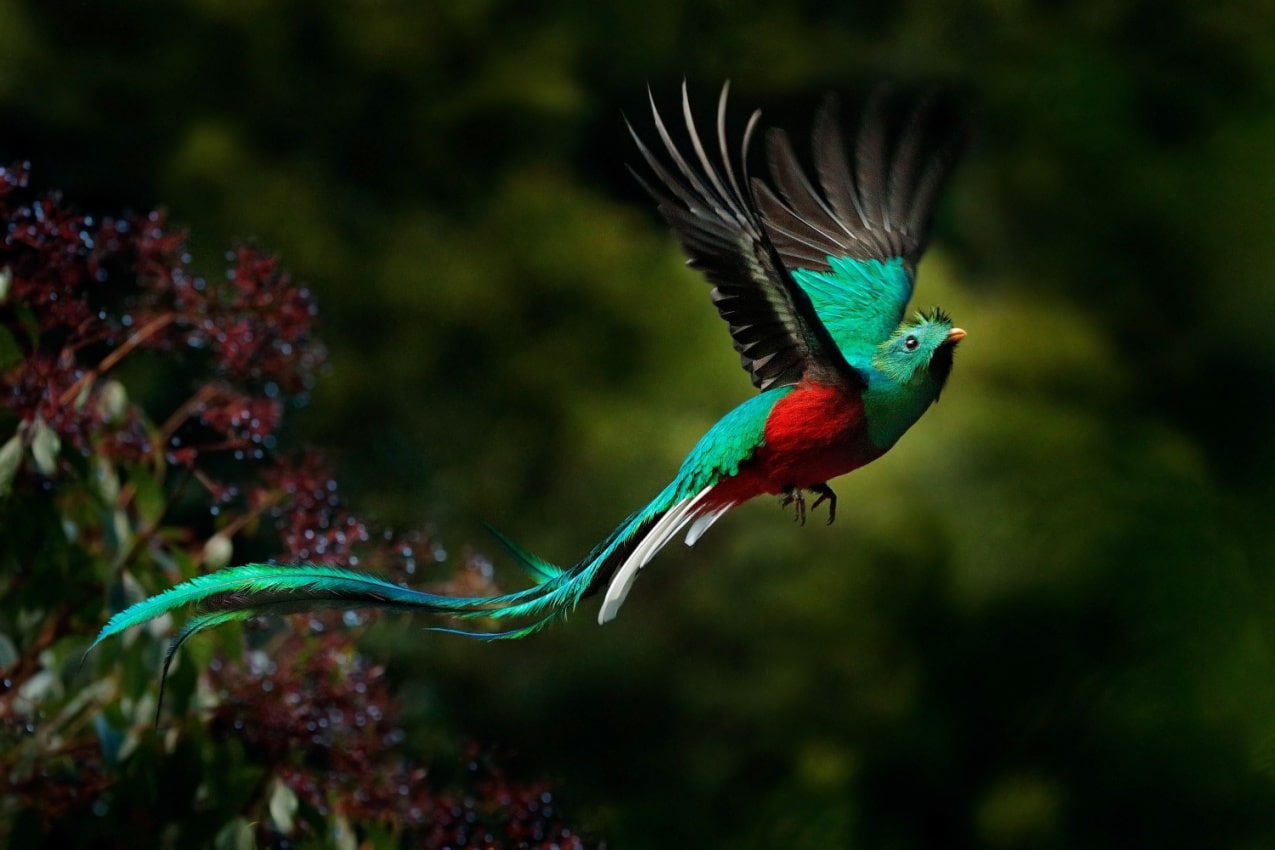
If you’ve ever wondered which bird is the most beautiful in the world, let us introduce you to the quetzal — Guatemala’s national bird.
This bird appears to have descended from Heaven — turquoise and green feathers, a deep crimson belly, a shaggy green comb on its head, and, most impressively, a super long wispy tail.
The quetzal thrives in Mexico’s highland cloud forests, where its turquoise plumage blends perfectly with the flora.
The Mayans and Aztecs worshiped the quetzal as the messenger of the God of the Air. Its uniqueness was also cherished outside the borders of Mexico, as Guatemala declared the quetzal its national bird in 1871, picking it from among 750 kinds of birds!
21. Booby: The Charming Blue-Footed Seabird
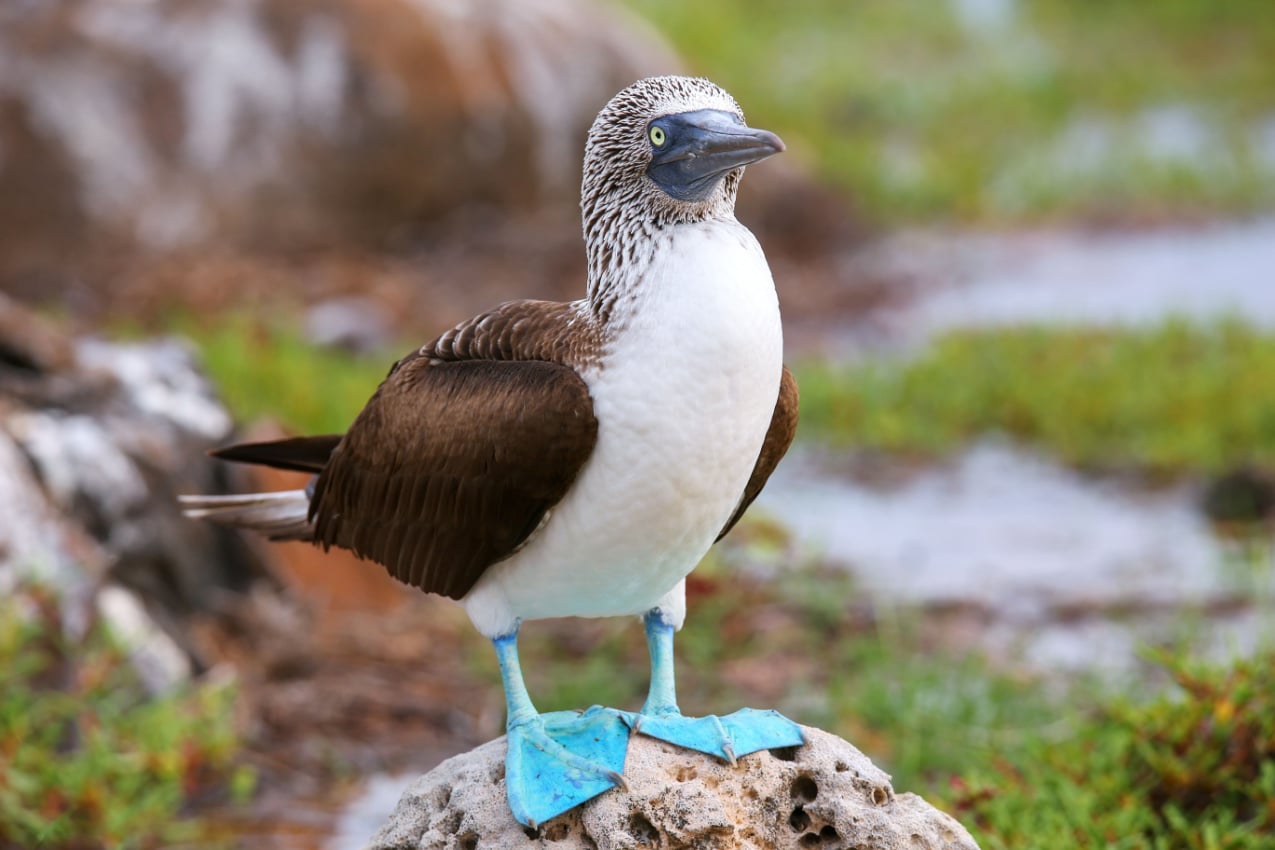
If you’re strolling along the sands of the Gulf of California, keep an eye out for blue-legged birds with clumsy walks!
European explorers found their appearance to be quite amusing! These birds not only have blue feet, but they also move clumsily on land, which is why they are called, “bobo,” which means “foolish.”
However, these bird species are very proud of their appearance. Females are attracted to blue feet: the more vibrant the blue, the more interested the female is in mating!
If you go to Mexico during mating season (June to August), you can see their incredible mating ritual. It starts as a form of dance and ends with the male flaunting off his feet. Then the female booby is like, “damn, those feet are irresistible,” and they live happily ever after!
22. Armadillo: The Little Armored One
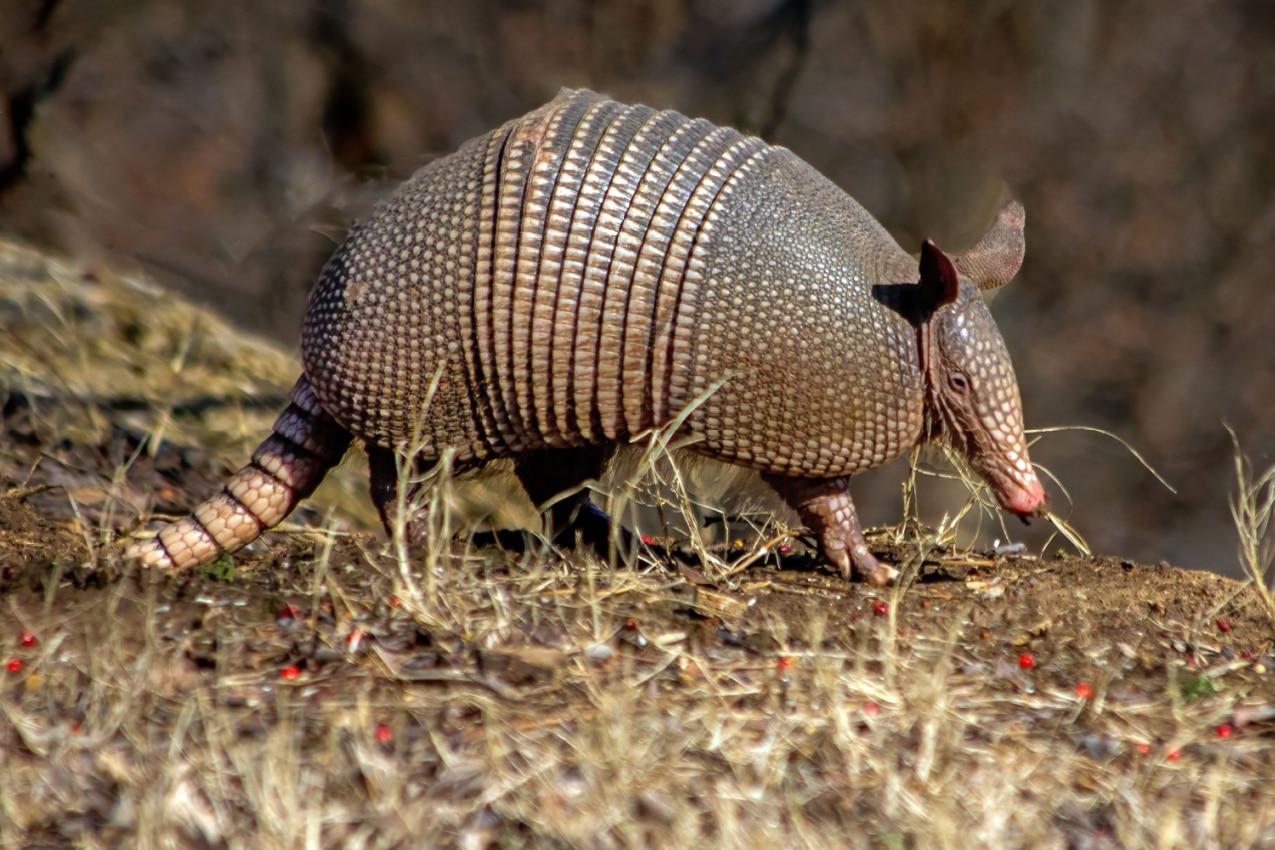
If you’ve ever journeyed through Mexico’s woodlands or jungles, you may have spotted the peculiar armadillo.
Armadillo means “little armored one,” and when you look at it, this animal seems ready for a battle! Its entire body is literally coated in bony keratin plates.
Armadillos have poor vision but a keen sense of smell, muscular legs, and razor-sharp claws. They’re nocturnal mammals, so they eat, dig shelters, and breed at night.
During the day, they usually sleep for up to 16 hours. But you won’t be able to see them, as they like to sleep in burrows. In fact, they make several, and when they leave in search of better feeding grounds, their burrows end up as homes to snakes, skunks, and rats. Sharing is caring!
23. Burrowing Toad: The Amphibian Architect of the Soil
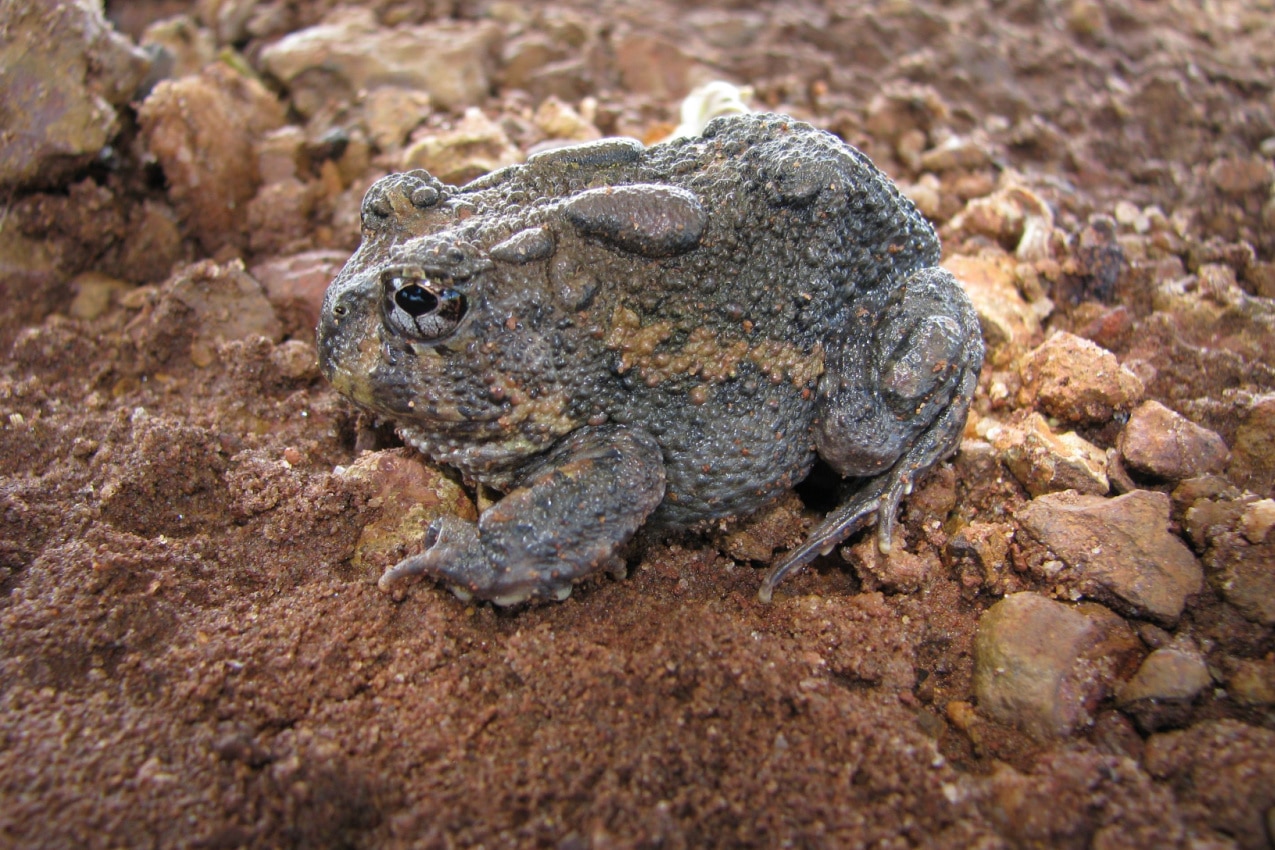
The Mexican burrowing toad is the sole species of the Rhinophrynidae family, meaning it’s genetically unique and has no near relatives among burrowing frogs!
The name “Rhinoprhynus” is Ancient Greek for ‘nose-toad.’ They’re known for their black bodies and red markings on the back.
The burrowing toad is well-called because it spends most of its life underground, only emerging during seasons of heavy rain or to reproduce. Their preferred meal is ants and termites, but they may survive for years without eating.
When the frog makes its characteristic call, it almost resembles an owl, and when it’s feeling threatened, it swells out like a balloon! Similar to a pufferfish, except this one swells on land!
24. Manatee: The Marine Teddy Bear
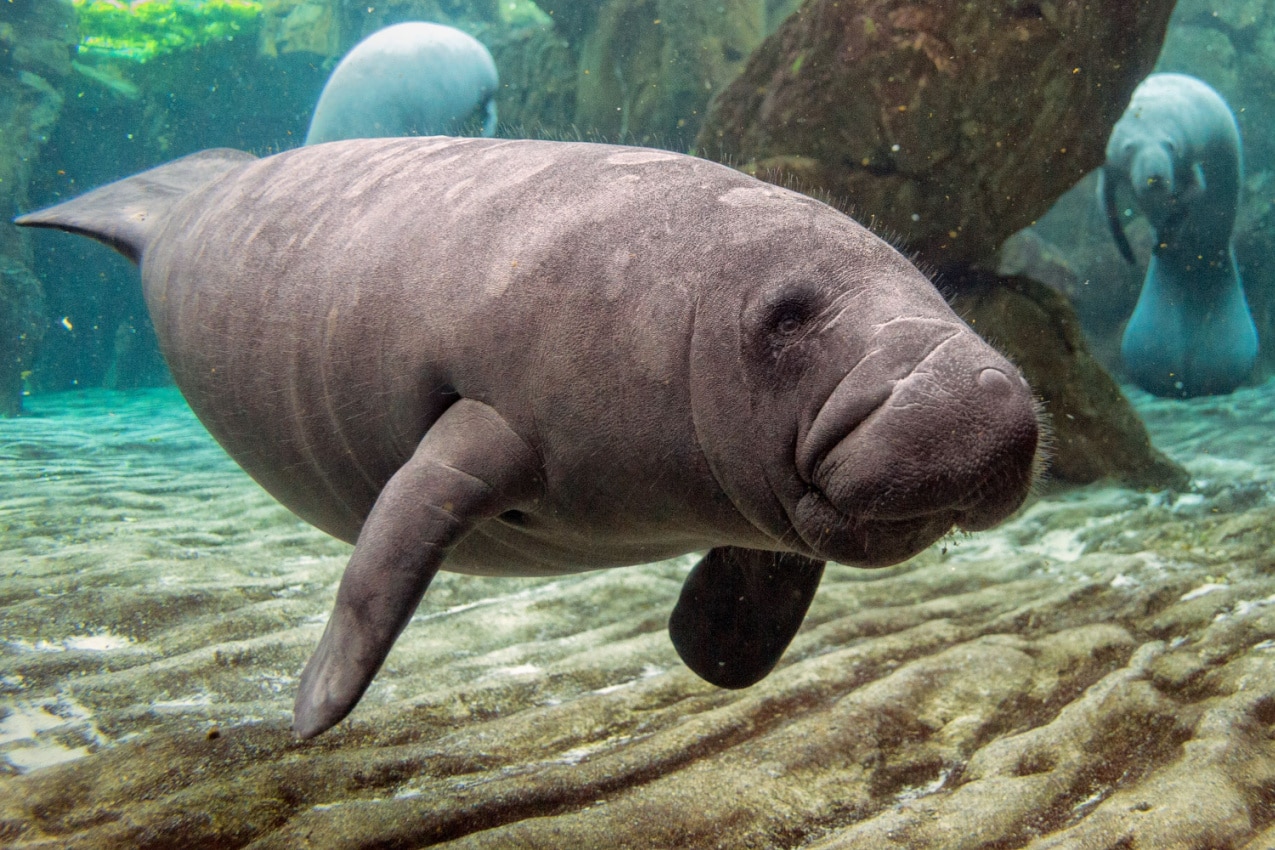
Manatee is the equivalent of a marine teddy bear. They are chubby, and round, and have some of the cutest faces ever!
Manatees live in rivers and coastal areas, and they like to munch on seagrass, mangroves, and algae. Actually, they eat so much greenery that they are also known as “sea cows.”
Manatees are mammals, and the elephant is their nearest relative. They are approximately 10ft (3 meters) long and weigh up to 3,500lb (1590 kilograms).
Despite their size, manatees are extremely flexible swimmers and masters of holding their breath. They can remain underwater for up to 20 minutes.
When it comes to swimming distance, they prefer slow and steady. They swim at a leisurely 5mph. So, if you see one in the water, be patient — they like to take their time swimming away!
25. Morelet’s Crocodile: The Primeval Guardian of the Waters
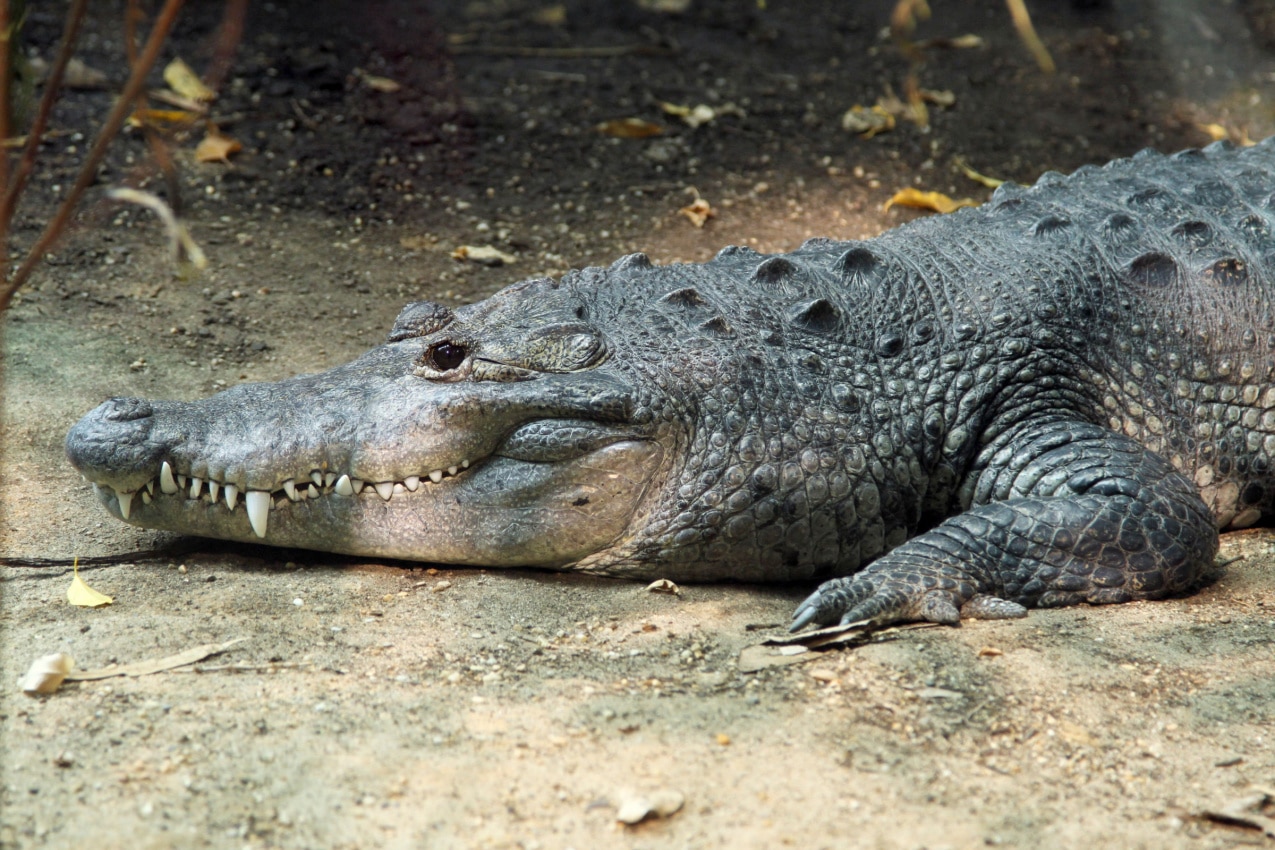
With so much wildlife throughout Mexico, did you think we won’t mention crocodiles? We don’t like to encounter them either, but they do live there!
Morelet’s crocodile is native to Mexico. The name comes from the man who discovered them — the French naturalist Morelet. This crocodile can grow up to 10 feet (3 meters) in length — which is modest. But that’s good news; the smaller the crocodile species, the better for those that come into contact with them.
They are nocturnal hunters and like to spend the day soaking up the sun. However, they’ll still feed if they sense a tasty treat. Morelet’s crocodiles are very hyper-aware of their surroundings, so don’t be fooled if you see one chilling in the sun. Any prey is welcome prey to them!
Conclusion
Which animal do you most wish to see in real life?
The whales would certainly provide a once-in-a-lifetime experience, but can you imagine spotting the beautiful quetzal on some of your adventures in Mexico?
In fact, any of the species described above will be a sight to behold. Mexico is clearly an animal wonderland, so next time you travel to mexico, pack a camera and be on the lookout for these unique animals!




I want to go to mexico.